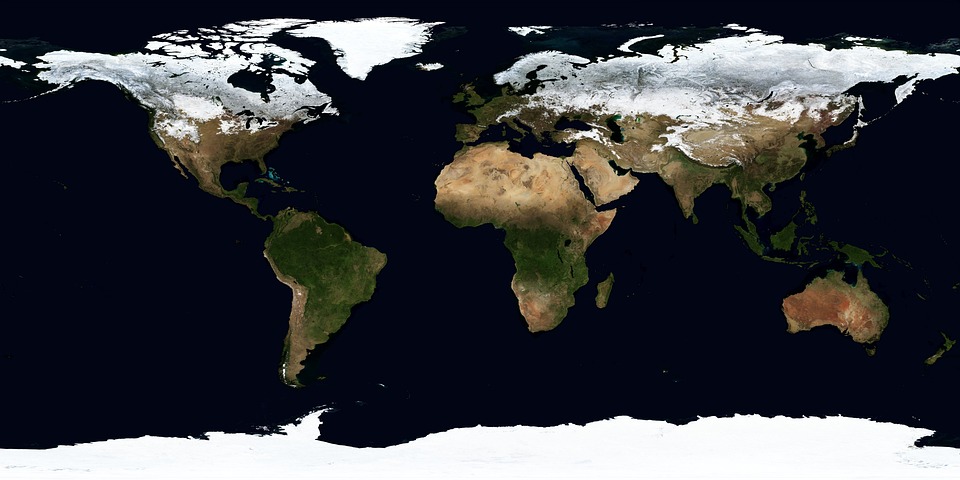
The concept of space-time fabric is a fundamental concept in modern physics that is used to describe the nature of space and time. In this concept, space and time are not considered as two separate entities but are rather considered as a single entity called space-time. This entity is not static, but instead, it is constantly changing and warping due to the presence of mass and energy.
The concept of space-time fabric was first introduced by the famous physicist Albert Einstein in his theory of general relativity. According to Einstein’s theory, the presence of mass and energy causes a curvature in the space-time fabric, which results in the effect that we observe as gravity. In other words, gravity is not a force that is transmitted between objects, but rather it is the result of the curvature of the space-time fabric caused by the presence of mass and energy.
To understand the concept of space-time fabric, we need to first understand the concept of space and time. In classical physics, space and time are considered as two separate entities, and they are described using the concepts of distance and time intervals. For example, if we want to describe the position of an object, we use the concept of distance, which is the separation between two points in space. Similarly, if we want to describe the motion of an object, we use the concept of time, which is the interval between two events.
However, in modern physics, space and time are considered as a single entity called space-time. This entity is described using a four-dimensional coordinate system, where the three dimensions represent space, and the fourth dimension represents time. In this coordinate system, any event is described using four coordinates: three for space and one for time. This concept of space-time allows us to describe the position and motion of an object in a single framework.
The concept of space-time fabric is related to the curvature of space-time. According to Einstein’s theory of general relativity, the presence of mass and energy causes a curvature in the space-time fabric, which results in the effect that we observe as gravity. To understand this concept, we can use the analogy of a rubber sheet. Imagine that we have a rubber sheet, and we place a heavy ball in the center of the sheet. The ball will create a curvature in the rubber sheet, which will cause any smaller objects placed on the sheet to move towards the ball. This effect is similar to the effect of gravity. In the same way, the presence of mass and energy causes a curvature in the space-time fabric, which results in the effect that we observe as gravity.
The curvature of the space-time fabric is not a static phenomenon but rather a dynamic one. It changes depending on the distribution of mass and energy in the universe. For example, if we have a massive object such as a star, it will create a curvature in the space-time fabric around it. This curvature will cause other objects in the vicinity to move towards the star. The strength of the gravitational force depends on the mass of the objects and the curvature of the space-time fabric.
The concept of space-time fabric has many implications in modern physics. For example, it explains the phenomenon of black holes. Black holes are objects with an extremely high mass and density, which creates a curvature in the space-time fabric that is so strong that not even light can escape from it. The concept of space-time fabric also explains the phenomenon of gravitational waves. Gravitational waves are ripples in the space-time fabric that are caused by the movement of massive objects such as black holes or neutron stars. These waves were predicted by Einstein’s theory of general relativity, and they were detected for the first time in 2015 by the LIGO (Laser Interferometer Gravitational-Wave Observatory) experiment.
The concept of space-time fabric has many implications in modern physics, and it has completely transformed our understanding of gravity. According to the concept of space-time fabric, gravity is not a force that is transmitted between objects but rather a result of the curvature of the space-time fabric caused by the presence of mass and energy. This concept has been confirmed by many experiments and observations, and it is considered to be one of the most well-established theories in modern physics.
One of the most remarkable implications of the concept of space-time fabric is the explanation of the phenomenon of black holes. Black holes are objects with an extremely high mass and density, which creates a curvature in the space-time fabric that is so strong that not even light can escape from it. The concept of space-time fabric explains why black holes are so mysterious and fascinating. The presence of a black hole creates a curvature in the space-time fabric that is so strong that it traps everything that comes within its vicinity, including light. This effect is called the event horizon, and it is the point of no return for anything that enters the black hole.
Another implication of the concept of space-time fabric is the phenomenon of gravitational lensing. Gravitational lensing is the bending of light by the curvature of the space-time fabric caused by massive objects. This effect has been observed many times and has been used to confirm the presence of massive objects such as galaxies and clusters of galaxies. Gravitational lensing has also been used to study the distribution of dark matter in the universe.
The concept of space-time fabric also explains the phenomenon of gravitational waves. Gravitational waves are ripples in the space-time fabric that are caused by the movement of massive objects such as black holes or neutron stars. These waves were predicted by Einstein’s theory of general relativity, and they were detected for the first time in 2015 by the LIGO (Laser Interferometer Gravitational-Wave Observatory) experiment. The detection of gravitational waves has opened up a new field of astronomy, and it has allowed us to study the universe in a completely new way.
The concept of space-time fabric has also been used to study the early universe. According to the concept of space-time fabric, the universe started as a singularity, which is a point of infinite density and curvature in the space-time fabric. This singularity created a curvature in the space-time fabric that expanded rapidly, leading to the formation of the universe as we know it today. The study of the early universe using the concept of space-time fabric has allowed us to understand the origin and evolution of the universe in a completely new way.
In summary, the concept of space-time fabric is a fundamental concept in modern physics that has completely transformed our understanding of gravity. According to this concept, space and time are not separate entities but are rather a single entity called space-time, which is constantly changing and warping due to the presence of mass and energy. The presence of mass and energy creates a curvature in the space-time fabric, which results in the effect that we observe as gravity. This concept has been confirmed by many experiments and observations, and it has many implications in modern physics, including the explanation of black holes, gravitational lensing, gravitational waves, and the study of the early universe.







